Extra
Extra virgin olive oil is considered the best among the existing varieties of olive oil. It is the only oil that is extracted from a fresh fruit in a totally natural way. Its organoleptic properties and characteristics make it an essential element in all meals.
What makes Bellina Extra Virgin olive oil a prestigious brand is its excellent raw materials, its elaboration process carried out in the most natural way while taking care of every single detail, the unique benefits for health… But above all, its low acidity makes it unique, giving this oil an exquisite and excellent taste. The best of the Mediterranean diet, the highest quality liquid gold at your table to transform each of your meals in a unique moment.
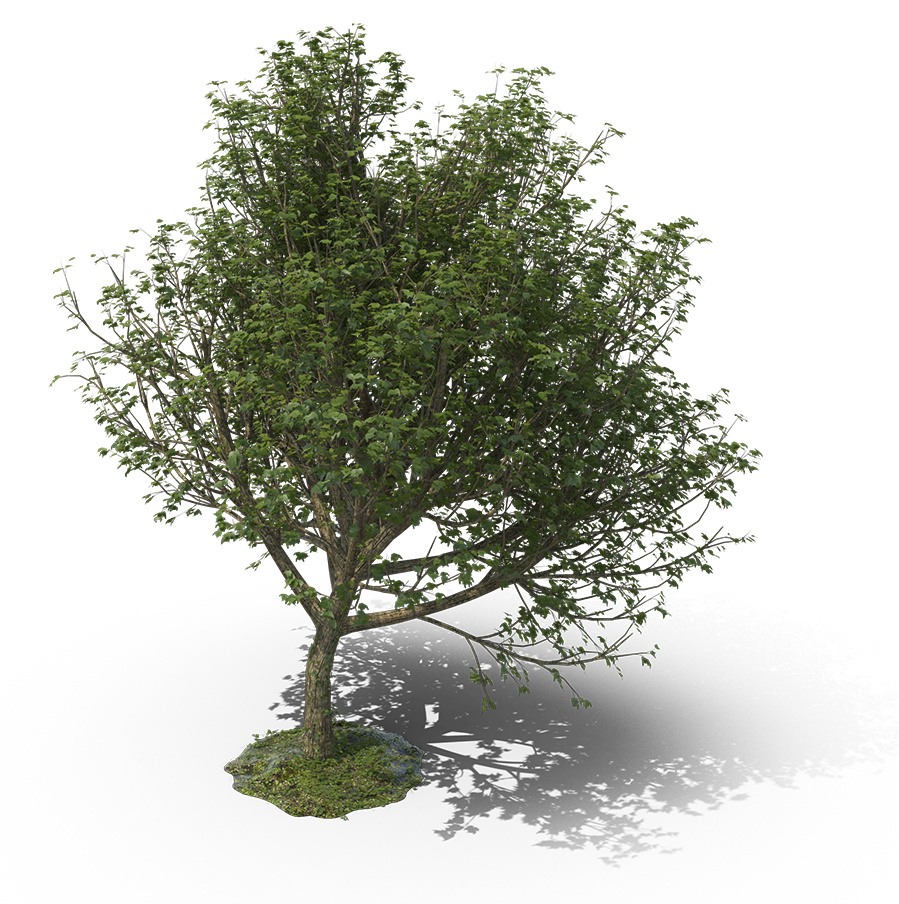
Olive
groves
Everything begins in olive groves. The combination of sustainable and ecological olive growing, tradition and technology makes Bellina produce the best oil while being respectful with the environment and obtaining the best results. Olives are harvested at the end of autumn or the beginning of winter, choosing the moment when olives have their maximum level of fatty acids in the olive pulp, and therefore the best properties.
From among all recollection systems, Bellina uses the one that causes less damage to olives, to avoid deterioration. Traditional manual recollection habits have been transferred to the most developed technology that improves the process and guarantees. Once they have been collected, olives are cleaned and sieved, eliminating residues such as leaves, stems, soil or small stones. They are then washed with cold water to remove other foreign bodies such as dust, mud and possible residues of herbicides.
Finally, they are stored in small piles waiting to be transported to the olive press where oil will be obtained. During the whole process a thorough control of the raw materials is carried out to obtain the highest possible quality in the subsequent processes.
Oil production
is made in 6 phases
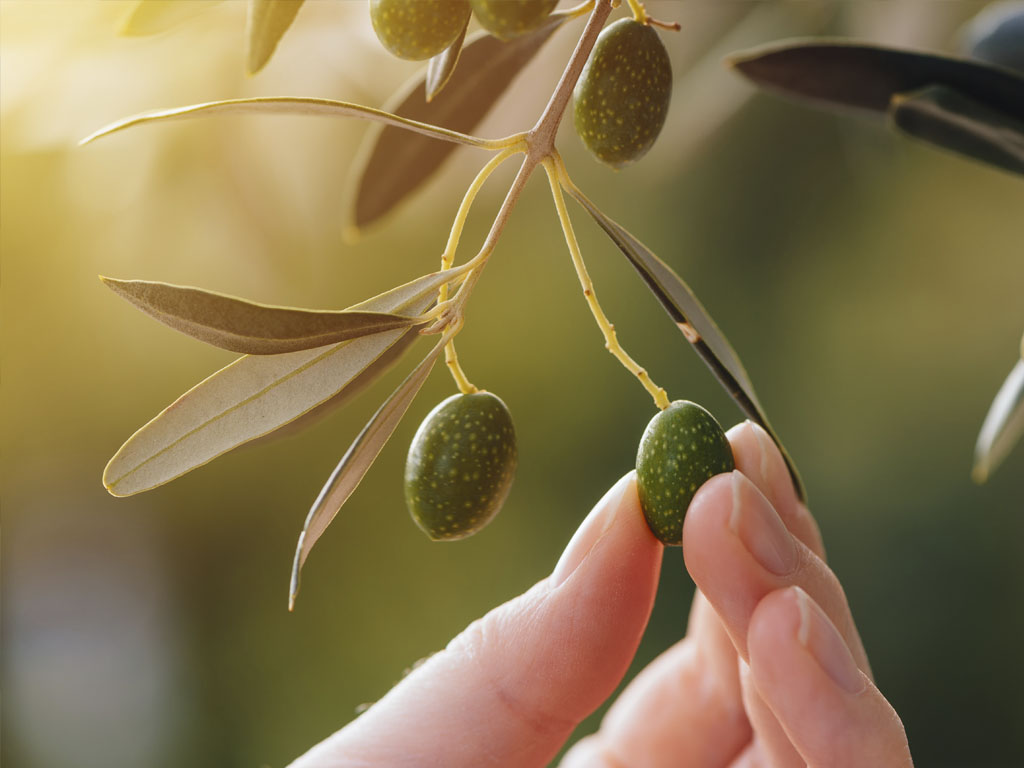
1.- Reception and selection
After the olives have been collected there is a verification process in the oil press so as to check that defective olives are separated from the healthy ones. The main purpose of this is to control olive entrance in the different lines.
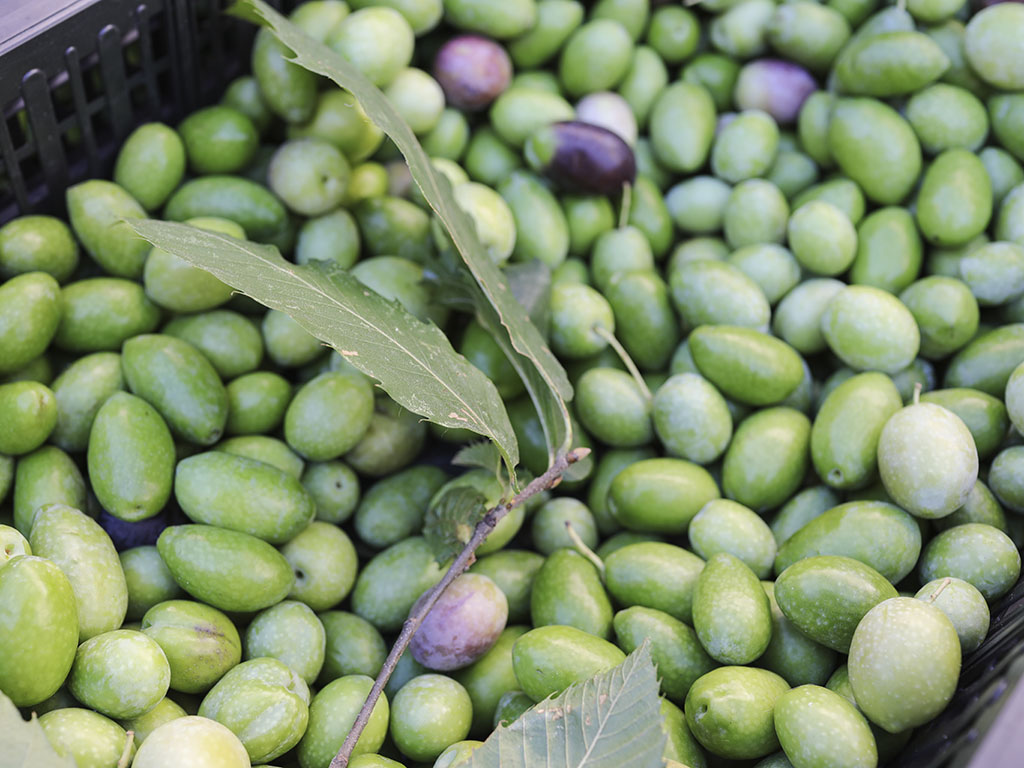
2.- Cleaning, washing and weighing
Then, the olives go through the cleaning stage to remove the leaves, stems or anything that could come with them, by use of air ventilators. Once cleaned, weighing and sampling is done in order to carry out the relevant analyses. The olives are then washed with drinking water to eliminate possible stones or mud. This step is not carried out if they are directly collected from the tree.
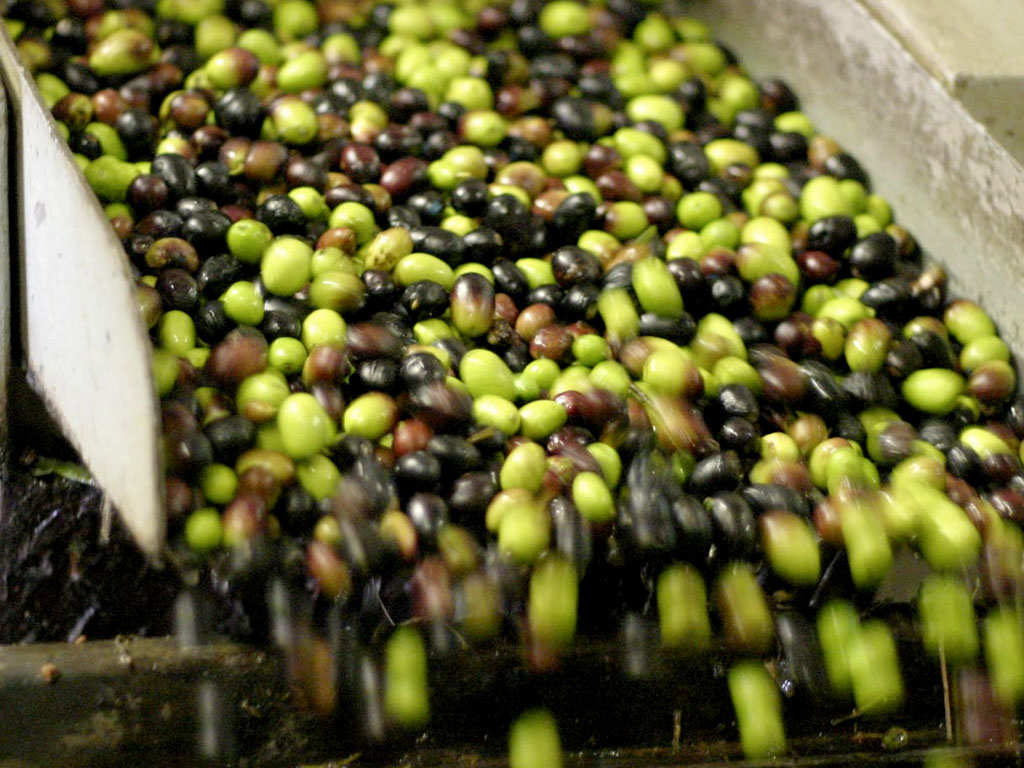
3.- Grinding
The grinding process must be done within 48 hours after the olives have been cleaned and washed as there could be fermentation and this would affect the quality of the oil. Grinding involves crushing and breaking the olive to facilitate the release and separation of the oil. For this process there are two methods: using a cone-shaped stone mill or metal shredders, which can be hammers with fluted cylinders or indented discs.
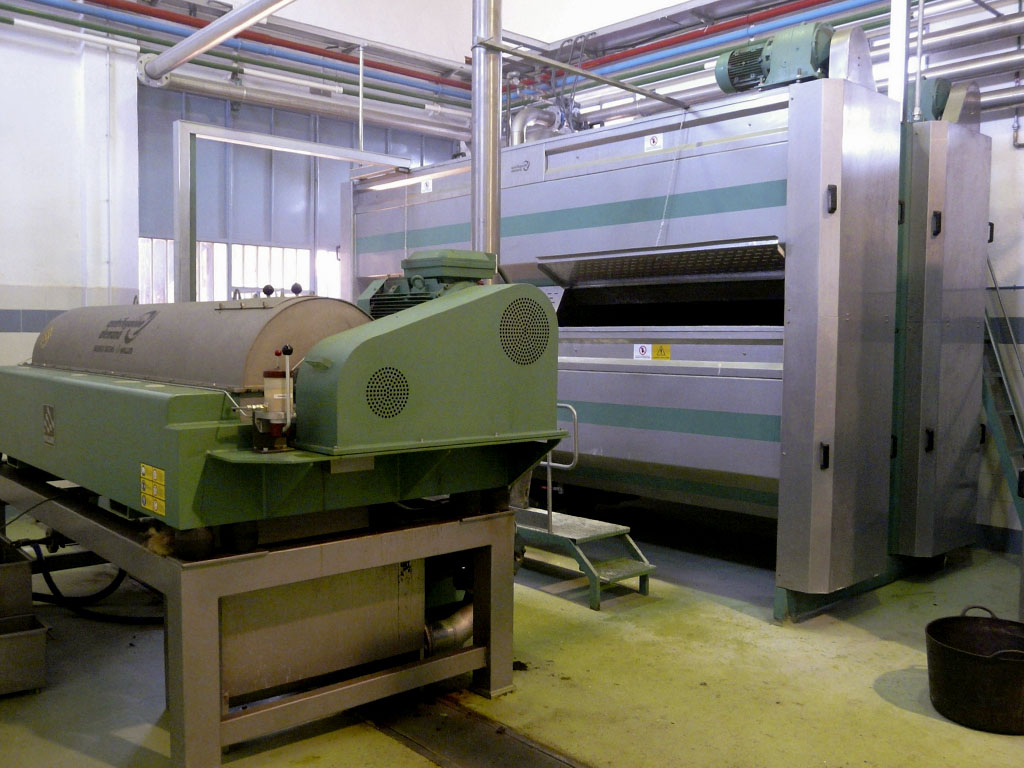
4.- Whisking
The dough that has been obtained after grinding the olives is whisked to facilitate oil release. Oil droplets are stored to form an oily phase that will be easier to separate from the aqueous phase and the solid phase. When whisking, the temperature must be below 30ºC so that the aromatic components are not lost and oxidation processes are not accelerated.
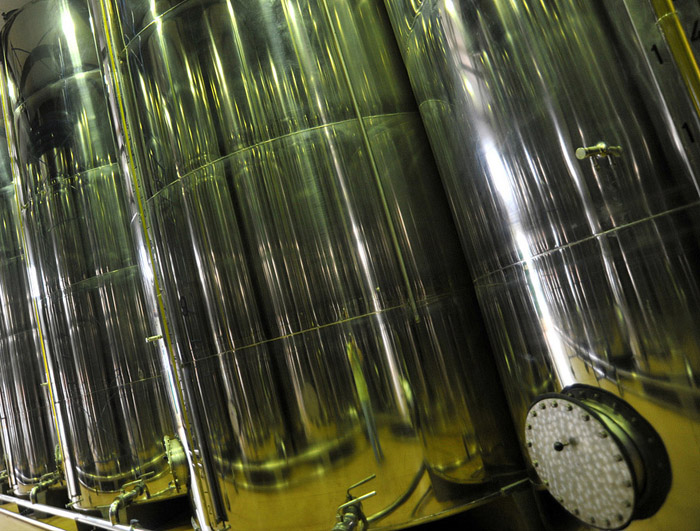
5.- Preservation
Once it has been obtained the oil has to preserved in optimal conditions so that it does not miss any of its qualities. Oil presses have ideal temperature, low luminosity, are insulated and contain closed tanks with taps and stainless-steel pipes so that the oil is not contaminated with smells or tastes.
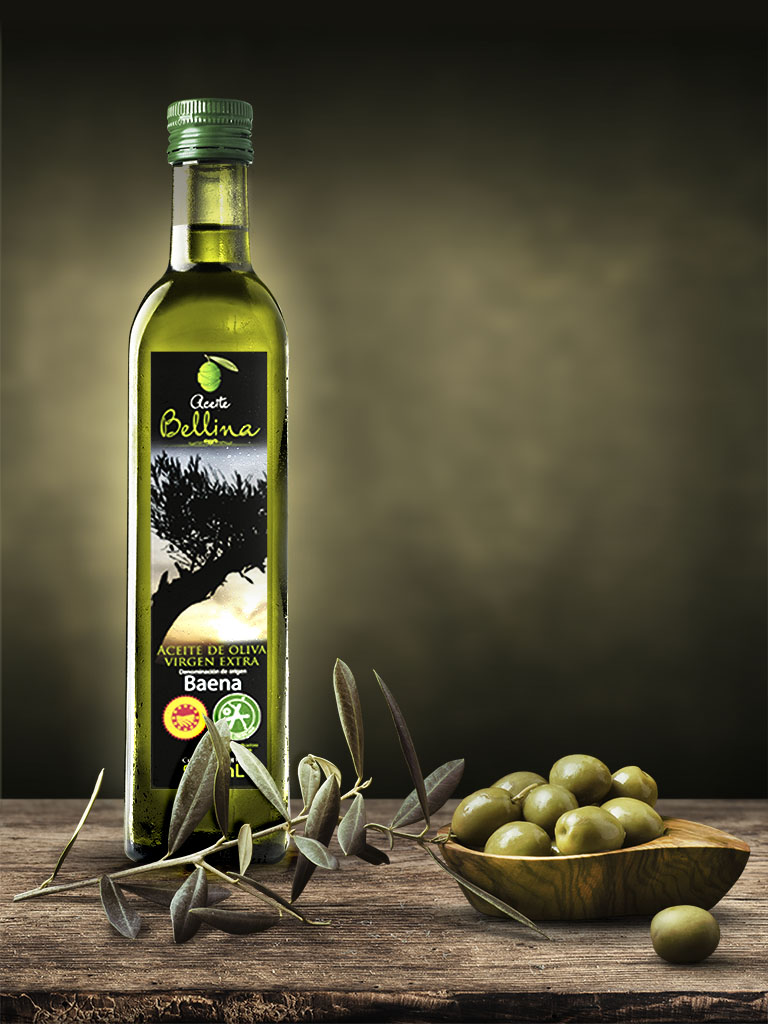
6.-Separation
The following methods are used to separate the oil from the aqueous phase (Alpechín) and the solid phase (pomace): Using pressure or a system of presses: The dough is put on large discs of coconut and braided polyester, called ‘capachos’. These are stacked on top of each other by inserting flat discs at certain heights to balance the pile and improve the pressure. They are put under the oil press and they are then pressed. In this way, on the one hand, a rather dry pomace is collected, and on the other, a mixture of oil and water is collected in decantation pots where it is left to rest, to separate the oily phase (oil) from the aqueous phase, with remains of solid particles. In this way clean oil will float on top of the water and the solid particles, since it is less dense. This method requires a lot of cleaning and manpower, thus it has been abandoned. Using centrifugation or a continuous system: This system involves introducing the dough in a horizontal cylinder and turning it at high speed. In the absence of air, and along the way of the cylinder the pomace, the water and the oil are separated, due to their difference in density. This horizontal cylinder where the olive dough is introduced is known as centrifugal horizontal cylinder, and depending on the number of phases that want to be obtained we will find: 1.-Continuous three-phase system. A little water is introduced from the outside to increase the aqueous phase and to facilitate the separation of the oil. More water is consumed and more Alpechín is produced. 2.-Two-phase continuous system. No water is added from the outside, therefore the volume of the aqueous phase or Alpechín generated is almost none, hence it is also known as an ecological system.


